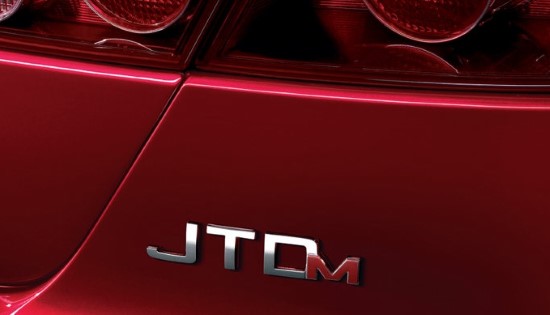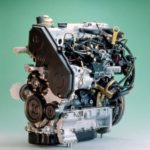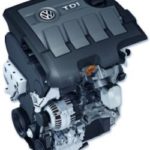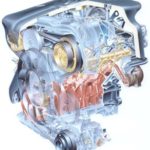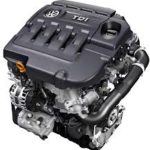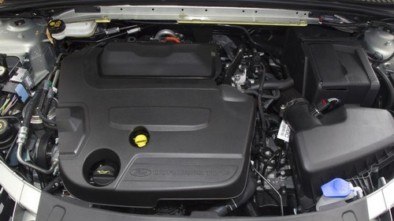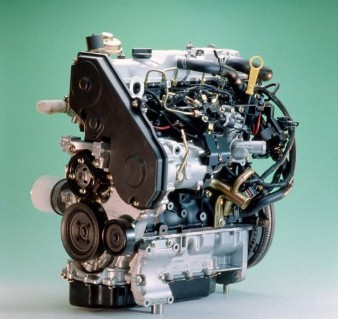What do the engine labels TDI, dCi, CDI, HDI, TDDI, TDCi… mean?

TDI engine
Engine markings often confuse even solid connoisseurs of motoring. The problem is that - in general - these labels don't have to mean anything. These are simply labels that car manufacturers use without universal rules. The first thing to look at is what will attract the customer - some manufacturers persistently keep the old label in order to retain a recognizable brand (e.g. TDI), and others are persistently making changes to show customers that they have put a new engine on offer…
So, these are purely marketing tags that manufacturers give their models based on evaluating what will most attract customers. Not - there are absolutely no standards, neither within a particular brand, a particular model, or a generation what exactly a label means. Yes - they make us think there are some rules, but they don't really exist.
You can't, based on engine tags reliably to find out who the engine manufacturer really is (even Mercedes is not always a Mercedes engine), what kind of fuel injection does it have, what generation, does it have a turbocharger or compressor, or even what kind of fuel it uses ?!
If there is a letter D in the label, then surely it's a diesel?
Not necessarily, although that is mostly the case. Some of the exceptions are Mitsubishi (GDI), Nissan (DIG-T) and Mazda (DISI), although the use of these labels can also be the subject of a very extensive story. But let's not complicate…
What the legendary label means TDI?
Surely "Turbo Diesel Injection"? Or maybe "Turbocharged Direct Injection". What should it mean then SDI? OK, we know it's a VW diesel without a turbocharger that can have 1.7, 1.9 and 2.0 liters, but there is a 2.5 version for vans. In short, SDI stands for "Suction Diesel Injection." Wait a minute, it's the Germans, why would you tag in English? You are right, FDI is an acronym for "Saugdiesel Direkt Einspritzung". In rough translation, "atmospheric with direct injection".
However, TDI engines there are both pump nozzles and common rail versions. So what does TDI specifically mean? And even when we put in a story, for example. Dodge Caliber that uses a 2.0 TDI engine, but under the 2.0 CRD code. Then the Jeep Patriot 2.0 CRD with the same VW engine, and there is the Patriot 2.2 CRD with the Mercedes engine, which Mercedes in its models refers to as Permanent.
It can be viewed as follows: CRD - Common Rail Diesel. This label is used by all vehicles of the Chrysler group (Dodge, Jeep, Chrysler), regardless of which or whose engine they use, and we already know that they used both VW and Mercedes engines. Okay, it makes sense…
However, we have a Mercedes that takes the company’s engine Renault and paste the CDI tag on the back of the car, and on the other hand, give its diesel engine to another manufacturer who puts his mark as desired.
JT extension - Fiat's label for the first generation of diesels with a "Common Rail" system. It is an acronym for "Jet Turbo Diesel". This engine family comes with four and five cylinders with two or four valves per cylinder. In addition to vehicles from the Fiat Group (plus Alfa Romeo and Lancia), they are also used by cars and other brands, but under different designations.
There are also MultiJet engines, representing the second generation. When MultiJet embeds in Alfa it becomes JTDm, in Opel it turns into CDTi, Saab with this engine bears the mark TiD or TTID, and Suzuki "dared" to call him in his vehicles IDD.
When it comes to Opel, the CDTi label is there no matter who designed or manufactured the engine - Fiat, Isuzu, Ford / Peugeot / Citroen, VM Engines… And now, when Francuzi (PSA Peugeot Citroen, ie from 2016 "PSA Group" in English) have taken over Opel, will probably only use their diesel engines.
The letter "T" indicates that the engine has a turbocharger?
Not necessarily. BMW designates its diesel engines simply by adding the letter "d" - regardless of whether they have one, two or three turbochargers. The same goes for gasoline - the letter "i" does not tell us how many turbochargers there are. There's also an Audi that has gasoline with both a turbocharger and a compressor, but all carry the TFSI (or TSI) designation.
And celebrities Twin Spark or TS (Alfa Romeo)? That means the engine has two spark plugs per cylinder - one main and one auxiliary with the aim of achieving calmer idle work. Speaking of Alfa, there is also a gas station JTS ("Jet Thrust Stoichiometric") with direct fuel injection. In 99% of other cases, the letter T in the designation indicates that the engine has a turbocharger (or a compressor or a combination of turbochargers and compressors in certain cases).
Ford and the French
Ford and PSA Group Peugeot Citroen have made a serious collaboration in the development of diesel engines of various cubic meters. For example, these engines are fitted to Ford under TDCi, Peugeot and Citroen HDi models, as well as Mazda, Volvo, Toyota, Jaguar, Land Rover and Mini cars, each with its own designation.
Conclusion
This sharing, joint development or purchase of engines from other manufacturers does not necessarily mean that a company is unable to develop its own quality engine. Why invest tens or hundreds of millions of euros in development if there is already an engine that has proven to be of high quality and reliable and the "owner" is in the mood to sell it at an affordable price?
Also, if you do not agree with the statement that based only on the engine mark (without information on generation, year of manufacture, model…) on the car can make a conclusion about its characteristics, origin or mode of operation, feel free to give examples.
Author: Dragan Romcevic
Retrieved from: www.polovniautomobili.com
Recommendation of similar texts:

Hi there, I am Mladen and I am an auto enthusiast. I started this blog years ago to help like minded people share information about latest cars, car servicing ideas, used car info, exotic cars, and auto technology. You will find helpful articles and videos on a wide variety of cars - Audi, Mercedes, Toyota, Porsche, Volvo, BMW and much more. Ping us if you have anything cool to share on latest cars or on how to make older cars more efficient, or just want to say hi!

